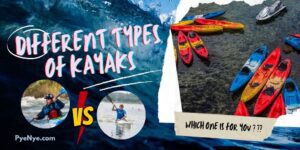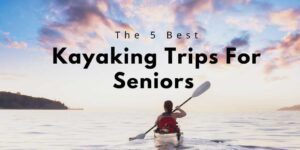Bioluminescence is a natural phenomenon that occurs in waters all over the world, but Florida is especially renowned for its abundance of bioluminescent waters. These areas are home to a variety of organisms that emit a bright, ethereal glow when they are disturbed, creating a breathtaking spectacle for those who witness it!
From the Indian River Lagoon, Mosquito Lagoon, and Banana River Lagoon to Tampa Bay, you can see a glimpse of bioluminescence in Florida.
Paddling in bioluminescent waters is an experience like no other. As the paddler moves through the water, the organisms are disturbed, and they emit a bright, otherworldly glow. The effect is breathtaking, as the water seems to light up around the paddler, creating a surreal and magical atmosphere. And when paddling through these waters at night, it’s like being surrounded by a sea of stars.
In this article, we will cover some of the best locations in Florida to see the bioluminescence. From the Indian River Lagoon to the Mosquito Lagoon, we will provide you with all the information you need to plan your bioluminescent paddling adventure. We will also share some tips and tricks to help you make the most of your experience.
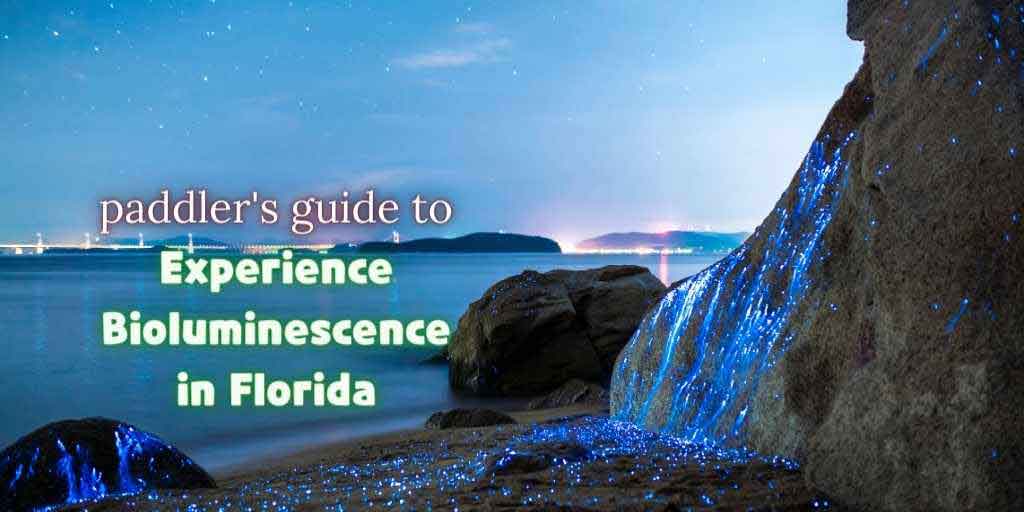
Jump To A Section
Where to Find Bioluminescence in Florida
Florida is a place of natural wonders, with beautiful beaches, crystal-clear springs, and diverse wildlife. One of the most unique and awe-inspiring natural wonders that Florida has to offer is bioluminescence. Bioluminescence is a natural phenomenon that occurs when certain marine organisms emit light. Witnessing bioluminescence in Florida’s waters is an unforgettable experience that will leave you mesmerized.
Let’s explore the best places to find bioluminescence in Florida;
Mosquito Lagoon
Mosquito Lagoon is located on the east coast of Florida and is home to some of the most stunning bioluminescent displays in the world. The lagoon is full of dinoflagellates, which emit a blue-green glow when disturbed. Kayaking or paddleboarding through the lagoon at night is a magical experience that you don’t want to miss.
Indian River Lagoon
Another great place to witness bioluminescence in Florida is the Indian River Lagoon. This lagoon is located on the east coast of Florida and is known for its stunning bioluminescent displays. Like Mosquito Lagoon, the Indian River Lagoon is home to dinoflagellates, and kayaking or paddleboarding through the lagoon at night is the perfect way to witness their beautiful glow.
Banana River Lagoon
Banana River Lagoon is another great spot to witness bioluminescence in Florida. Located on the east coast of Florida, this lagoon is home to a variety of bioluminescent organisms, including dinoflagellates. Kayaking or paddleboarding through the lagoon at night is a great way to witness the bioluminescent display and get up close with these fascinating creatures.
Merritt Island National Wildlife Refuge
If you’re looking for a unique and off-the-beaten-path experience, consider visiting Merritt Island National Wildlife Refuge. Located on the east coast of Florida, this wildlife refuge is home to a variety of bioluminescent organisms, including comb jellies. These creatures emit a stunning rainbow-colored glow, creating a mesmerizing display that you won’t soon forget.
Tampa Bay
Bioluminescence isn’t just limited to the east coast of Florida. On the west coast, Tampa Bay is a great place to witness bioluminescent displays. Tampa Bay is home to a variety of bioluminescent organisms, including dinoflagellates and comb jellies. Witnessing the bioluminescence from a boat or kayak is a great way to experience this natural wonder.
When to visit Florida for bioluminescence
As you want to see the bioluminescence at its best, it’s important to know when to visit Florida for bioluminescence. The perfect conditions for bioluminescence include warm water temperatures, calm waters, and minimal light pollution.
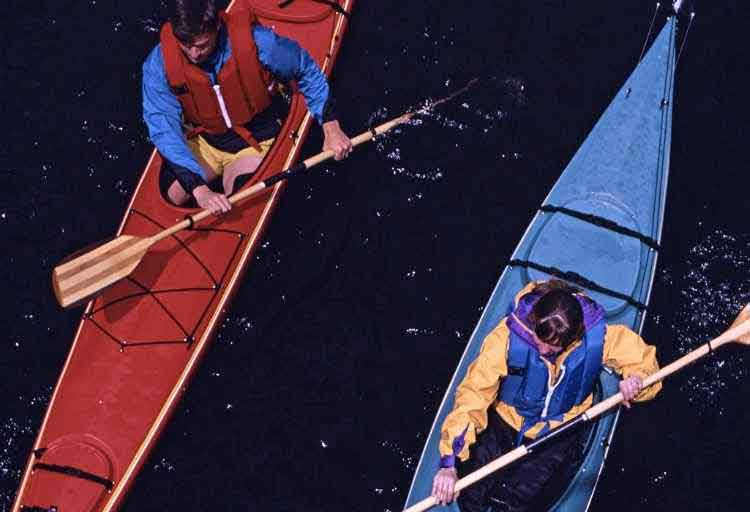
The best time of year for bioluminescence kayaking in Florida is during the summer months, from May to October. During this time, the water temperature is warm, and the conditions are generally calm, making it easier to witness the bioluminescence.
However, seasonal variation in bioluminescence is common, and the visibility of bioluminescence can vary depending on a variety of factors. These factors include the presence of nutrients, water salinity, and water temperature. Therefore, even during the summer months, bioluminescence sightings can vary depending on these factors.
Another important factor to consider when planning a trip to see bioluminescence in Florida is the role of the moon phase. Moon phase and its effect on bioluminescence can greatly impact the visibility of the natural phenomenon.
During a full moon, the light can be too bright, making it difficult to see the bioluminescence. Conversely, during a new moon, the sky is dark, and the bioluminescence can be more visible.
Best ways to experience bioluminescence In Florida
While kayaking is a popular way to experience this natural wonder, there are also other unique ways to witness the glow of bioluminescence in Florida.

If you’re planning a trip to Florida to experience bioluminescence, here are the best ways to make the most of your experience:
Take a Bioluminescence Kayaking Tour
One of the best ways to experience bioluminescence in Florida is by taking a kayaking tour. These tours take you out on the water at night, where you can witness the glowing organisms up close and personal. Many tour companies offer guided tours that include kayaks, paddles, and life jackets, as well as knowledgeable guides who can answer any questions you may have about the bioluminescent organisms.
Scuba Diving
Another way is through night diving. Several scuba diving companies in Florida offer guided night dives to see the bioluminescence underwater. Divers can see the glowing plankton and creatures up close as they move through the water, creating an ethereal and mesmerizing experience.
Go Swimming or Snorkeling
If you’re feeling brave, you can also go swimming or snorkeling in the bioluminescent waters. The glowing organisms are harmless, and swimming in the glowing water can be a truly magical experience. However, it’s important to note that not all areas are safe for swimming or snorkeling, so make sure to do your research and choose a safe location.
Tips For Observing Bioluminescence
While experiencing bioluminescence in Florida can be an unforgettable experience, it’s important to be respectful of the organisms and their habitat. Here are a few etiquette tips to keep in mind:
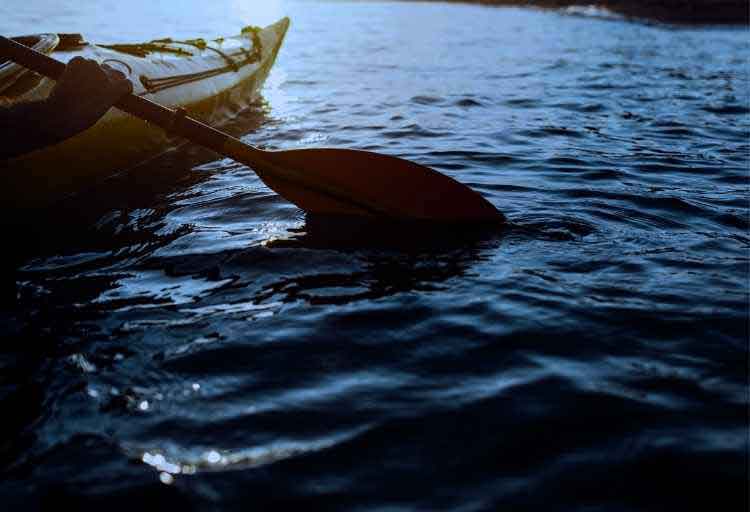
Keep noise to a minimum
Bioluminescent waters are often tranquil and peaceful. So keep noise to a minimum to avoid disturbing other paddlers or wildlife in the area.
Avoid Using Flashlights or Other Bright Lights
Bright lights can disrupt the bioluminescent organisms and make them more difficult to see. Avoid using flashlights or other bright lights while observing bioluminescence, and instead, allow your eyes to adjust to the dark.
Be aware of your impact
Bioluminescent waters are fragile ecosystems that require protection. Be aware of your impact on the environment and follow all regulations and guidelines for the area. Besides, remember to be respectful of the organisms and follow the proper etiquette for observing bioluminescence.
Don’t Touch the Organisms
While bioluminescent organisms are harmless to humans, it’s important to avoid touching them. Touching the organisms can disrupt their natural habitat and could harm them.
Be patient
Bioluminescence is a natural phenomenon that can be unpredictable. Be patient and give yourself time to adjust to the darkness. Allow your eyes to adjust and give the organisms in the water time to produce bioluminescence.
Respect Wildlife and Their Habitat
Florida’s waters are home to a diverse array of wildlife, including bioluminescent organisms. Be sure to respect the wildlife and their habitat, and avoid littering or disturbing the natural environment.
Understanding bioluminescent organisms in Florida
Bioluminescence is caused by a biochemical reaction that occurs within the bioluminescent organism. This reaction involves the interaction of luciferin, a light-emitting pigment, and an enzyme called luciferase. When the two substances combine, energy is released in the form of light.
In Florida, the most common bioluminescent organisms are dinoflagellates, a type of planktonic microalgae. These dinoflagellates are part of the natural ecosystem and can be found in marine and brackish waters throughout the state.
Environment plays a significant role in the production of bioluminescence. For example, the activity level of bioluminescent organisms is often highest at night, when there is less light and more darkness.
Temperature also plays a role, as some bioluminescent organisms are more active at certain temperatures. Additionally, nutrient levels can affect bioluminescence, as some dinoflagellates require specific nutrients to produce light.
Pollution and other forms of environmental degradation can also impact bioluminescence, as they can harm the delicate balance of the ecosystem and reduce the availability of nutrients for bioluminescent organisms.
Top bioluminescence Kayak Tours In Florida
If you’re looking for an unforgettable way to experience the bioluminescence in Florida’s waters, then a bioluminescence kayaking tour is the perfect option for you. Here are some top bioluminescence kayak tours in Florida that you should consider:
A Day Away Kayak Tours
A Day Away Kayak Tours is a popular bioluminescence tour operator in Florida, and one of the amazing things that set them apart is the variety of locations they offer for their bioluminescence kayak tours.
They operate in several locations throughout Florida, including Titusville, Cocoa Beach, and Merritt Island, giving visitors the opportunity to experience bioluminescence in different environments and ecosystems.
And each of these locations offers a unique experience, with different species of bioluminescent organisms and different landscapes to explore. For example, visitors on the Titusville tour will paddle through the shallow waters of the Indian River Lagoon, surrounded by mangrove trees and the sounds of nature.
In contrast, the Cocoa Beach tour takes visitors through the Banana River Lagoon, where they can see bioluminescence, comb jellies and enjoy views of the Kennedy Space Center in Florida.
Adventure Kayak of Cocoa Beach
Adventure Kayak of Cocoa Beach offers bioluminescence kayak tours that depart from Banana River Park in Cocoa Beach. And one amazing thing that sets them apart is the length of their tours.
In addition, they also provide all the necessary equipment for the tours, including kayaks, life vests, and paddles, ensuring that visitors have a safe and enjoyable experience. They also offer private tours for those who prefer a more personalized experience, accommodating visitors with different needs and preferences.
Glow Paddle
Glow Paddle is a bioluminescence tour operator that offers guided kayak tours in Indian River Lagoon. One amazing thing about this tour operator is that they specialize specifically in bioluminescence tours, providing a truly unique and immersive experience for visitors.
They also offer options for private tours, small group tours, and large group tours, accommodating visitors with different needs and preferences.
BK Adventure
BK Adventure offers bioluminescence kayak tours that depart from various locations in Florida, including Orlando, Clearwater, and Tampa. One amazing thing about this is that it allows visitors to experience the bioluminescent displays in different parts of Florida, each with their own unique ecosystems and organisms that create the glowing displays.
A Day Away Kayak Tour
If you prefer to explore on your own, A Day Away Kayak Rentals offers kayak rentals in various locations throughout Florida, including Titusville, Cocoa Beach, and Merritt Island. You can rent a kayak and paddle out on your own to witness the bioluminescence at your own pace.
These are just a few of the top bioluminescence kayak tours and rental options in Florida. Each tour operator offers a unique experience, so be sure to research and choose the one that best fits your preferences and schedule.
